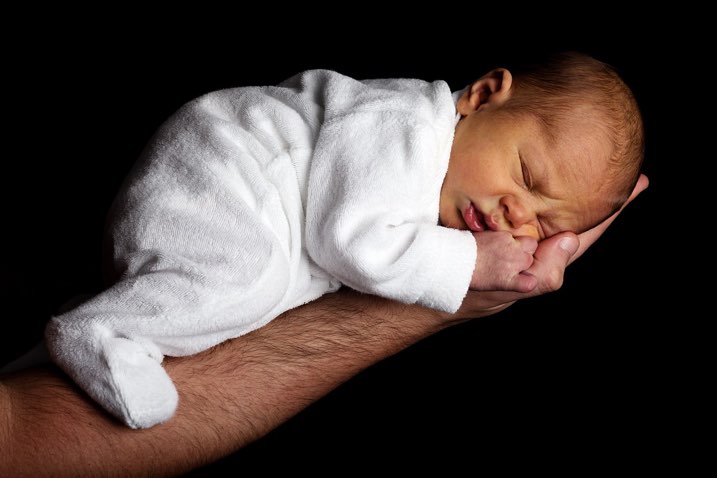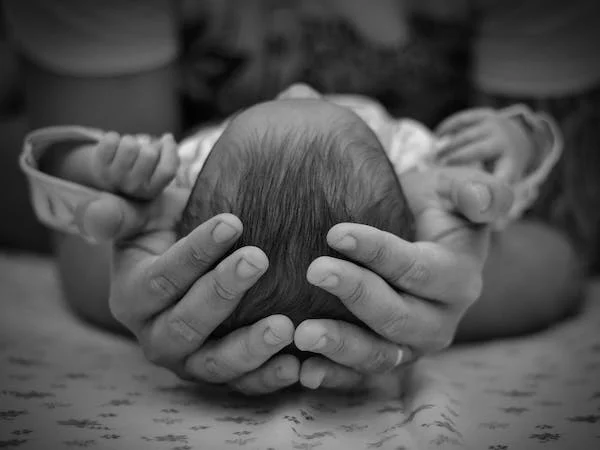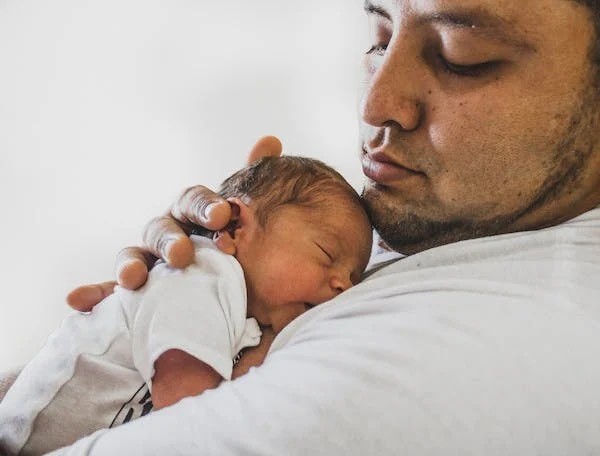As a paediatrician, almost everyday I come across jaundiced babies. A newborn with jaundice, looks yellowish due to cumulation of a yellow coloured pigment called bilirubin. Parents often wonder, “Where from this bilirubin comes?”, and “What causes newborn jaundice?”.
Here in this post we will go in detail of how bilirubin is formed normally and why newborns are more likely to get jaundiced.
Bilirubin metabolism and production?
Medical term for jaundice is hyperbilirubinemia ( high bilirubin level ). Bilirubin have its origin from breakdown of RBCs or Red Blood Cells.
As we all know each RBC contains red coloured molecules, called haemoglobin inside it. This haemoglobin transports oxygen to different parts of body.
Red Blood cell has a limited life span, after which it disintegrates and haemoglobins are released. Haemoglobins metabolise further to produce a yellow pigment called bilirubin
Role of liver in bilirubin metabolism
Liver in a human body is a hub for most metabolic activities. One such process is bilirubin metabolism and excretion.
Liver picks up un-conjugated bilirubin which is generated from haemoglobin and convert it to conjugated bilirubin. This form of bilirubin is easily excreted out from body as bile.
WHY BILIRUBIN ACCUMULATES IN A NORMAL NEWBORN ?
As discussed above, red blood cells break down and produce bilirubin as byproduct. This bilirubin is afterwards processed in liver by conjugation process. It then is excreted through gut in stool.
If more RBCs ( red blood cells ) are broken down or else liver is not able to metabolise bilirubin, then excess of it is accumulated in body. Too much bilirubin is evident as jaundice to outside.
What causes newborn jaundice is not same as that of an adult. The manner in which bilirubin is formed and processed inside a newborn’s body is peculiar. This makes it highly susceptible to get jaundice.
Following are the 3 main reasons why is a newborn more susceptible to jaundice.
- More RBCs
- Short RBC life span
- Immature liver
1. More RBCs
Newborns have more numbers of RBCs in their blood. When these RBCs lyse, that produce more bilirubin.
2. Short RBC lifespan:
RBCs in newborn babies have shorter life span than adult
|
Age |
RBC life span |
|
Adult |
120 days ( i.e. 4 months ) |
|
Term or mature baby |
60-90 days ( i.e. 2-3 months ) |
|
Preterm or Premature baby |
35-50 days ( i.e. 1-2 months ) |
From above table it is easy to understand that RBC turnover is more frequent in babies. It is even more so in premature babies. This is one of the reason what causes newborn jaundice more frequently compared to adults.
3. Immature liver :
When inside womb, baby’s metabolism is aided by mother’s liver. After delivery as baby is separated from mother, it thrives on its own. Now the little one depends solely on its liver to metabolise bilirubin.
However Liver in newly born baby is not mature enough to excrete out whatever bilirubin is produced. Nevertheless as baby grows, gradually liver matures over time.
WHAT CAUSES NEWBORN JAUNDICE ?
When a baby gets a yellow tinged skin and eye because of jaundice, most of the time is simply due to normal bodily process and is harmless. This is called physiological jaundice. It accounts for 75% of all jaundice cases.
Another 25% cases of newborn jaundice has an underlying disease condition. Hence it’s called as pathological jaundice. It causes marked elevation in bilirubin and this need to be addressed early.
One thing Clinicians are cautious of is not to miss out pathological jaundice. To know in further detail about when pathological and physiological jaundice appear in a little one’s life, read this blog linked below.
Now let us come to our main topic, ‘commonly what causes NEWBORN jaundice’. We have discussed each cause individually below.
1.Breast feeding jaundice
One advice that every paediatrician gives to contain jaundice, is to feed baby properly and timely. During initial days of life, mother’s milk is not yet established fully. Because of less feeds baby is prone to jaundice.
This jaundice that happens because of reduced frequency or amount of feeding is called breast feeding jaundice. Another name for it is “breastfeeding failure jaundice”.
The basic mechanism is, as feeding is less gut slows down. Stool accumulates inside intestine for longer duration. Gut microflora ( intestinal microbiota ) then deconjugates bilirubin. This in turn leads to re-uptake of bilirubin from intestine. This increase in “entero-hepatic circulation” of bilirubin results in jaundice.
Breast feeding jaundice typically appears in first week of life. Jaundice here is mild to moderate in degree and resolves spontaneously.
2.Breast milk jaundice
In very few cases, mother’s milk is the reason behind jaundice. This is better known as breast milk jaundice. This jaundice starts at end of first week, and peaks in second week. After 2 weeks it gradually comes down. Normalisation may take up to 3 months
This happens because in few mothers. breast milk has an excess beta-glucuronidase enzyme. This enzyme when passes down, it deconjugates the previously conjugated bilirubin in gut. This free bilirubin again comes into blood, causing jaundice.
Important clue here is, if mother’s milk is withheld temporarily then jaundice resolves. If jaundice is peaking high then mother’s milk is not given to baby for 48 hours. Instead baby is fed with alternative feed.
If it is breast milk jaundice then, bilirubin will fall drastically within 48 hours. When breast milk is reintroduced, it doesn’t raise bilirubin much.
Important note :
Breastfeeding jaundice and Breast milk jaundice are totally different. Breast feeding jaundice occurs due to reduced feeds whereas breast milk jaundice resolves after reducing or stopping breast milk.
Bilirubin is not much in breast feeding jaundice whereas, in breast milk jaundice it may go very high.
3.Preterm
A premature baby is the one delivered before time ( i.e. less than 37 weeks of pregnancy of mother ). These babies’ RBCs break down more frequently. Also they have immature liver.
Hence premature babies are more susceptible for jaundice.
4.IUGR baby
IUGR stands for “intra uterine growth restriction”. Here baby is not able to grow properly inside mother’s uterus. The reason may lie with in ‘baby’, or with in ‘mother’ or in ‘placenta’ ( the tissue that attaches mother and baby ).
IUGR baby has slow gut motility. This makes digested food to keep inside gut for longer time. As we know already that bilirubin gets excreted through stool. If stool motility is slow then this bilirubin is again absorbed back to blood stream. This is known as “entero- hepatic circulation”. This circulation of bilirubin causes bilirubin to rise and appear as jaundice.
Also these IUGR babies are born with excess of blood ( per kg body weight ). This condition is termed as Polycythemia. Polycythemia gives rise to jaundice. Which is explained below.
5.Babies with excess RBCs ( Polycythemia )
Some babies are born with excess of red blood cells in body. This condition is called polycythemia. These babies look more red ( plethoric ) compared to a normal baby, owing to more RBCs.
When these red blood cells breakdown, it produces excess bilirubin in body. Hence there is jaundice.
6.Incompatibility of blood group
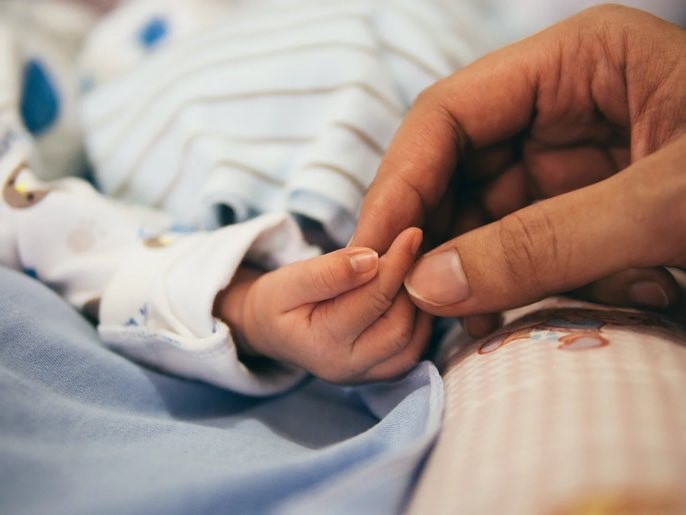
In certain cases mother’s blood group is different from baby blood group. This condition is called as blood group incompatibility.
There are two types of incompatibilities, namely
- ABO incompatibility
- Rh incompatibility
ABO incompatibility happens when mother has blood group O and baby has A or B. For instance mother is O positive and baby is A positive.
In blood group incompatibility between mother and baby, mother produces antibodies that pass to the baby, when baby is inside uterus. After delivery also these antibodies remain active for days. These destroy RBCs of baby causing severe jaundice.
Important note
To prevent consequences of Rh negative pregnancy, ACOG ( American College of Obstetricians and Gynaecologists ) advise to give anti D antibody to such mother at 28 weeks of pregnancy. And second dose is repeated after birth, if baby is Rh positive or Rh status not known.
7.Bruising on head ( cephal-haematoma) And Bleeding into brain ( intracranial haemorrhage)
While normal delivery, babies may develop bruising over scalp adjacent to skull bone. This is due to pressure on head of a baby during delivery.
When blood inside this bruise assimilates, it results in jaundice. Similarly any kind of internal bleed in brain ( intracranial bleed ) also raises bilirubin.
8.Dehydration fever
Suppose a baby is getting too less of milk or exposed to a hot environment with too much of fluid loss, it suffers from dehydration and excessive weight loss. These babies have a tendency to have jaundice.
9.Infection or Sepsis
Babies having infection is indeed a common phenomenon in developing countries. When infection spread to whole body of a baby through blood, this is termed as sepsis.
A baby with sepsis is less active and have feeding issues. This baby is prone to jaundice too because of multiple factors.
10.Delayed cry / Birth asphyxia
Some babies do not cry immediately after birth. In these babies there is reduced supply of oxygen to different organs of body during that time. This is called birth asphyxia. This makes a baby prone for high bilirubin level.
11.Hemolytic anaemias
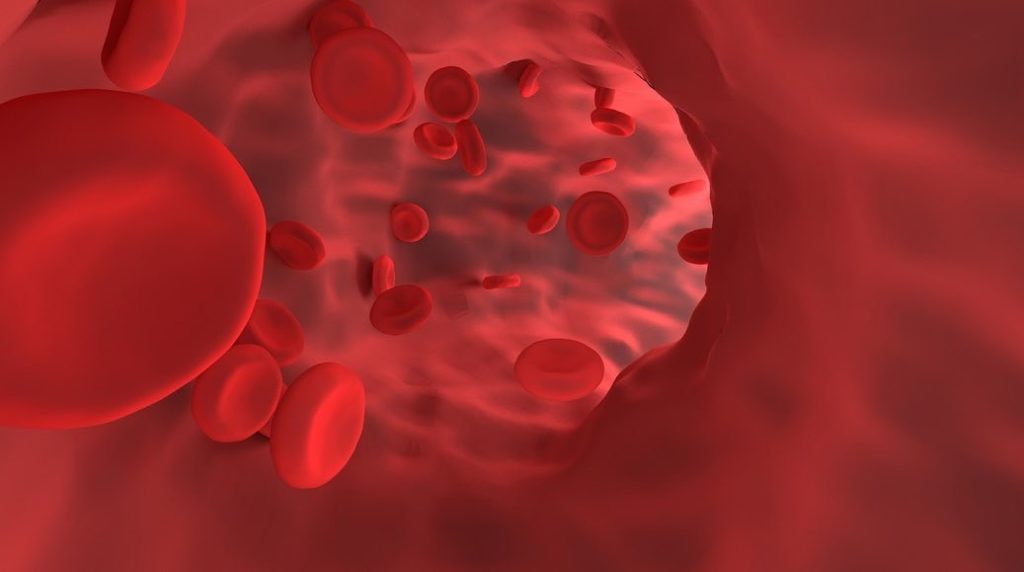
Diseases where red blood cells are more prone to breakdown are collectively called haemolytic anemia. Many such diseases run in families, and are there since birth. If hemolysis (RBC breakdown) is severe, it presents within first few days after delivery as jaundice.
One such common example is G6PD enzyme deficiency. This is an enzyme which keeps red cells healthy and prevents RBC breakdown. Babies born with this enzyme deficiency may develop severe red cell breakdown and severe jaundice within first 24 hours of birth.
G6PD deficiency is exclusive to male gender. Family history of similar illness gives a clue.
Other haemolytic anaemias which can cause jaundice in a baby are listed below
- Thalassemia
- Spherocytic anaemia ( red blood cells become spherical instead of disc shape )
- Eliptocytosis ( red blood cells are elliptical in shape )
- PKD – pyruvate kinase enzyme deficiency
All these are inherited from one generation to next, hence these run in families.
12.Maternal infection / Congenital infection
Mother’s infections that cause harm to the baby inside uterus are called “TORCH”. This stands for –
- To – Toxoplasma
- R – Rubella
- C- Cytomegalovirus
- H- Herpes and Hepatitis B
Mother develops fever and in few cases rash also. And hence the baby is born with congenital infection and develops jaundice subsequently.
13.Hypothyroidism
Babies whose thyroid hormone levels are low suffer from jaundice too. This is because of following reasons.
- Uptake of bilirubin by liver is less
- UGT enzyme ( an enzyme that metabolises bilirubin) does not function properly
- Gut movement is sluggish, so bilirubin again gets reabsorbed from gut
The jaundice hence produced may persist beyond 2 weeks.
14.Metabolic diseases
Alpha 1 anti-trypsin deficiency is a common metabolic disease. Besides few other diseases to name are Galactosemia, tyrosinemia etc.
In metabolic diseases toxic chemical accumulates inside body. These chemicals impair function of liver and cause jaundice.
15.Liver diseases with UGT enzyme defect
UGT ( uridine diphosphate glucuronosyl transferases ) is an enzyme present in liver. This enzyme metabolises bilirubin. In certain hereditary diseases like Gilbert syndrome, Crigler najjar syndrome type 1 and type 2 , this enzyme level goes down. Hence there occur jaundice.
Most severe jaundice out of all 3 is seen in Crigler najjar type 1, what causes newborn jaundice as early as day 1 of life. Here UGT enzyme is absent altogether.
16.Bile duct obstruction
Bilirubin is excreted through bile. This bile flows out to gut along bile duct. In gut it is then excreted out in stool.
In few babies there is obstruction in bile duct, leading to bilirubin accumulation. Two diseases worth mentioning here in this category are ‘biliary atresia’ ( small and obliterated bile duct ) and ‘choledocal cyst’ ( cyst like dilated bile ducts ).
Typical feature of bile duct obstruction is pale coloured or clay coloured stool instead of yellow stool along with jaundice.
17.Maternal medications
If mother is taking any medication that interferes with bilirubin metabolism in baby, then this will cause jaundice. One such medicine is antibiotics like sulfonamides.
Conclusion
A baby receives phototherapy and in very rare cases exchange transfusion if jaundice is too high. Treating physician takes that decision.
Knowing and understanding probably what causes newborn jaundice is crucial, as it predicts the future graph and outcome of jaundice. It also helps in treatment
Caution
All the informations provided here are for educational and awareness purpose only. Kindly do not use these as alternative to medical consultation.


